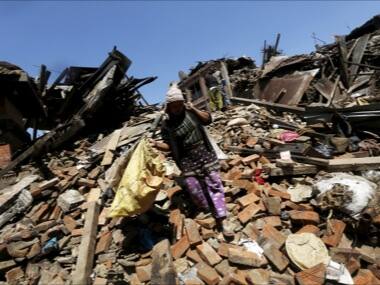Media, media think, is never in the wrong. So, even as they claim that they are doing things for the public good, they are actually relentlessly pursuing better TRPs, more readers and suchlike. [caption id=“attachment_2227278” align=“alignleft” width=“380”]  Representational image. Agencies.[/caption] They think that the media can be counted upon to twist and spin and sex up stuff to make news, or what they try to tell us is news. In fact, some information being peddled as news is coloured with views to such an extent that it becomes an opinion. News is facts. Opinion is the view on it. The latter cannot be the substitute for the former. However, the primetime slots are for opinion, be it English or Hindi or any other regional language. They may even be called ’newshours’ but that is misleading to say the least. Take India’s coverage of the Nepal earthquake for example. The coverage has irked Nepalis because it appeared from the way news was being covered, that both the Indian media and the government were trying to boost their image as the Good Samaritans, instead of wanting to help the distraught Nepalis honestly. The wall-to-wall coverage strengthened the belief that India was beating its own drum too loudly. However, the points raised in Sunita Shakya’s ‘A Letter to Indian Media’, and which triggered the outrage in Nepal, is unfair. Asking the reporters to function as relief workers is way off the mark. “If your media person can reach where relief supplies have not reached”, can’t “they take a first-aid kit or some food” is absurd. Relief workers and media cannot do each other’s work. This is different from the usual question on ethics – would you prevent a person from jumping off a building if you could have, or kept on shooting? In Nepal, the scale of devastation is so vast that such considerations don’t come into play. Recently, The Hoot, a media watchdog put out a small but telling item on how the Indian media was regularly resorting to ‘sexing up news’. It pointed out how a channel, just before Rahul Gandhi’s rally, publicised it as one in which Gandhi will “aggressively” lead Congress on the land issue. After the rally, the same channel dismissed the rally as lacklustre later. The venerable The Hindu had said Pakistan “slammed” India on Masarat Alam’s arrest when that country had merely “deplored” it. This points to how media could be reckless. The Hoot said, “Adjectives, apparently come cheap”. Newslaundry, a media watch portal, had reported how “Megha Singh, Gajendra’s teenaged daughter who was at the receiving end of relentless media questioning within two days of losing her father” was “visibly upset and traumatised after her interaction with Aaj Tak and that she was crying for quite some time afterwards.” After Gajendra Singh killed himself at the AAP rally in Delhi, former journalist and now AAP leader Ashutosh broke down on camera during a conversation with Aaj Tak. He had been criticised for crocodile tears and a lot of social media space was dedicated to discuss him, but only Newslaundry looked at the other person in the scenario, Gajendra Singh’s daughter. The Newslaundry article also called out other media organisations who ran to Dausa to get “something equally sensational". It noted that " some reporters bullied the girl to give a byte even though she was not quite up to it”. The girl’s plight was forgotten in the competition for TRPs. Here is a telling point made by Manisha Pande in her expose: Megha was putting up a brave front even as Ashutosh was crying away, when “it should have been the other way around. By the end of the 36-minute long live panel discussion, Megha is visibly shaken. This after she was made to sit through and listen to three politicians and a probing anchor, Anjana Om Kashyap, dissect her father’s death and repeatedly ask her for her comments to the point of rank insensitivity. Remember it had been less 48 hours to her father’s death.” There are two other kinds of mischief by now a staple for the media. One is the penchant for asking leading questions. Like, shouldn’t the Aam Aadmi Party have organised ambulances at the rally, a TV reporter asked a Congress spokesperson the day after the suicide by Gajendra Singh? The other is converting every incident into a political drama by the choice of panelists in a so called ‘debate’. An internal affair of a party could mean an intense probing of the spokesperson of that party, not having to invite those of rivals just to build up the heat. I recall how futile it was when I asked a TV channel, while on its primetime show, that if we were discussing an internal issue of the AAP, why was Sambit Patra there, and not an AAP leader? There are no easy answers to these questions.
The consumers of news too, at present, treat media with some amount of suspicion.
Advertisement
End of Article
Written by Mahesh Vijapurkar
Mahesh Vijapurkar likes to take a worm’s eye-view of issues – that is, from the common man’s perspective. He was a journalist with The Indian Express and then The Hindu and now potters around with human development and urban issues. see more


)

)
)
)
)
)
)
)
)



